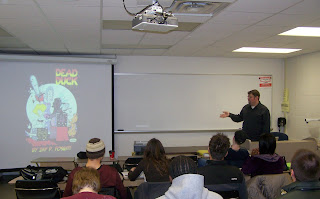It is important to define the differences between male and female brains: A brain is just a brain, but people have asked themselves if the male and female ones could show -- through scientific studies -- basic or big differences. A resent exploration was not to discover the male-female differences; it was just to show the interpretations from such a mixed data. There are many factors in this mystery, but this essay’s main goal is not to discuss whether the brain of one sex is superior to the brain of the other but to explore the significance of the differences we are discovering in the brains of males and females.
The experiment was made to find these differences, researchers worked by using the rat brain (so similar to human brain), because it has the basic components and major structures, with this they can learn many things about the anatomy of the rat brain. It was important to use a laboratory where researchers could have the control of the environment, food, water, climate, sex, age, living conditions, and others. Thus, they can get clear comparisons. It is important to know the brain’s anatomy, this experiment explains some fundamental things: the brain is divided in three parts: the hind brain, midbrain and forebrain. The most important is the forebrain, where is the development about 85% of our total brain, called the cerebral hemispheres and intimate associate with the cerebral cortex, this is the most highly evolved part of the brain and deals with higher cognitive processing.
We have three areas in the cortical that control motor behavior and planning for action, the sensory and visual functions. The investigations show that some female cerebral cortex is developed more highly than others at birth compared to the male, whose three areas have a similar development at birth.
The thickness of the right and the left cerebral cortex is different between male and female animals, in the female brain non significant differences exist between the right and the left hemispheres from birth well into adulthood.
The studies show that female brain is symmetrical and the male cortex is asymmetrical.
In conclusion, this show that in a female animal, the brain focused functions are to protect and raise her offspring and the male ones involves finding and defending his territory and finding his female.


Experiments with rats had been very useful to determine the role the parents and teachers play in the academic processes their children pass through. These useful animals had provided information about the love that parents should demonstrate to their children and the high proteins levels diet they should follow to feed their children to get the successful growth in some specific areas of the brain. Children spend the most of the time at home (or at least, with their parents) and just a certain amount of time at school, this is a fact that determines parents affect children academic development. If teachers and parents want children get academic success, the first ones as much as the second ones should give children a peaceful environment that promotes exploration, have to stimulate their creativity, senses with productive mental, physical, social and emotional activities which should be adapted to their cognitive level and related to their interests, avoiding pressure over children, nourish them properly (with a protein rich diet), should allow children to evaluate the stages and accomplishments during their learning process and should encourage kids to participate actively on it. The opposite conditions (low-protein diets, long periods of isolation, activities chosen and results evaluated only by teachers with no children participation, among others) just could produce difficulties and obstacles in the children’s way to the academic success. Other important note to be taken into account is the fact that the brain shouldn’t be overstimulated because it can cause a non wanted result, because its cortex grows better if the stimuli are given in a moderate amount.
At last but not less important, neuroscience studies brain and human behavior (that are extremely related to it), and studies in this researching field have tested that emotions can affect positively or negatively a student’s development through the learning process. Each human being learns according to an intelligence style that determines what kind of activities help or not the students to learn meaningfully. For this reason, if teaching can not be individual and personal (all human beings learn in a different way), it is very recommendable to use activities and lessons that evoke positive emotional responses, and that are adapted for multiple intelligences. It will be very productive to get a success in the academic learning process.










.JPG)

